What's New
Displaying results 4861 - 4870 of 4911
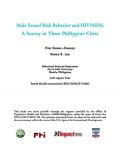
Resource | Publications,
The main objective of the survey was to assess the level of HIV/AIDS risk behavior among general population males in three major urban areas in the Philippines particularly Quezon City, Cebu City, and Davao City. These cities were part of the Department of Healths National HIV Sentinel Surveillance System.
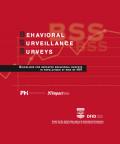
Resource | Guidelines,
Behavioral surveillance surveys (BSS) have been shown over several years to make an important and useful contribution to informing the national response to HIV. These surveys use reliable methods to track HIV risk behaviors over time as part of an integrated surveillance system which monitors various aspects of the epidemic.
As interest and experience in BSS has grown, demand has surfaced for all the available tools to be gathered into a single document. These guidelines meet that demand. They are designed to provide a “one-stop” reference to help public health officials set up and manage systems that provide reliable trends in HIV risk behaviors. Information is also provided to help those who will be implementing the surveys themselves.
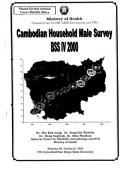
Resource | Publications,
The objective of the 2000 round of Behavioral Surveillance Survey (BSS) was to provide a comprehensive description of sexual behavior among men in Cambodia, to gain a better understanding of the extent of high-risk behavior in urban and rural population males.
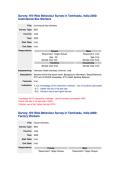
Resource | Data Sheets,
Sections of the final report cover: Background Information, Sexual Behavior, STD and HIV/AIDS Knowledge, STD Health Seeking Behavior.
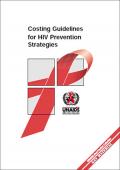
Resource | Publications,
It is essential to know the costs of different prevention strategies to be able to set public policy priorities in the fight against AIDS. Hence this important costing tool, a new edition of Costing guidelines for HIV prevention strategies, first issued by UNAIDS in 1998. The guidelines now contain cost analysis worksheets and cover injecting drug users.
In many developing countries economists are scarce, but these guidelines make it possible for other professionals such as accountants and planners to analyse costs. Such analyses must be combined with a judgement of an intervention's outcome. That an intervention has a low cost does not necessarily mean it is worth while from an economic perspective; for example, if it does not slow the spread of the disease or has unwanted side-effects that outweigh benefits.
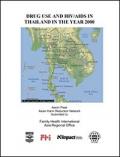
Resource | Publications,
In Thailand, estimates indicate that 984,000 persons have been infected since 1988 with HIV and that approximately 289,000 people have died of AIDS. Over 695,000 persons are now living with HIV. At the end of 1999, national HIV sentinel surveillance showed that prevalence had declined among Army conscripts, female direct/indirect sex workers, and pregnant women, but had increased among injecting drug users, from 39% in 1989 to 54.1% by June 1999.
Harm reduction for drug users has been a notable gap in AIDS initiatives. To date there is only one program located among Akha villages in Chiang Rai province. In addition, although a link between use of methamphetamine (or ATS) and HIV risk has yet to be clarified, ATS use has increased dramatically and has the potential to create serious health consequences.
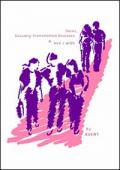
Resource | Tools,
STD stands for Sexually Transmitted Disease (sometimes called Sexually Transmitted Infection). This is an infection which can be caught by having sexual contact with someone who is infected. This can be vaginal, oral or anal sex, although other types of touching can pass some STDs - for example, some STDs (such as Herpes and HPV) can be caught by touching the infected areas of someone's body and then touching your own genitals (private parts). There are quite a lot of different STDs.
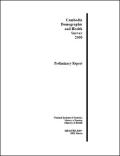
Resource | Publications,
The main objective of the CDHS 2000 was to obtain current information on demographic conditions, family planning, infant and child mortality, domestic violence, and health related information such as breastfeeding, antenatal care, child immunization, children’s diseases and HIV/AIDS. Also the questionnaires are designed to evaluate the nutritional status of mothers and children and measure the prevalence of anemia.
This report presents the preliminary findings from the CDHS 2000 that are expected to be used by policy makers to evaluate the demographic and health status of the Cambodian population in order to formulate appropriate population and health policies and programs in Cambodia. The final report of the CDHS as well as the summary report containing more detailed findings will be published in the first half of 2001.
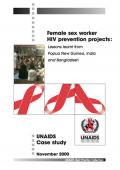
Resource | Publications,
The set of case studies in this collection emerged from a session entitled Best Practices in Female Sex Worker Projects held at the Fourth International Congress on AIDS in Asia and the Pacific in Manila, October 1997. Preparation for the session began in May 1997 when UNAIDS sponsored an effort to learn about sex worker projects in the region. Lists of known potential projects were elicited from sex work networks, well-connected individuals and researchers. A call for responses was placed on the SEA-AIDS list server.
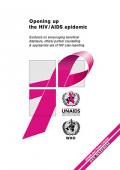
Resource | Publications,
Faced with the increasingly devastating impact of HIV/AIDS on individual and community well-being, and on development, life expectancy and childhood mortality, many governments have been reviewing the nature of their response to HIV/AIDS. Some have raised the issue of whether the principles of confidentiality and informed consent have hindered efforts to prevent the onward transmission of HIV. Particular concern has been expressed regarding the vulnerability of women to infection by husbands or partners who do not know their status, or refuse to reveal it or refuse to practise safe sex. This has led to calls to adopt policies such as named HIV case- reporting, mandatory disclosure of status and criminalizing the deliberate transmission of HIV.





